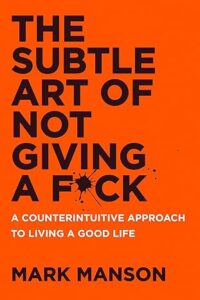One of my oldest friends, Steve Knagg (a former newspaper columnist), is a guitar-picking son of a gun. In the late 1980s and 90s, he and I traveled across the country to our state and national conferences and events, and played in hospitality rooms to mostly entertain ourselves, and hopefully, others.
That was back in the days when Southwest Arlines flew with only a few dozen passengers, even at peak times. Once, he and I boarded with our guitars and found there were only six other seats filled. We’d been in the bar earlier, so we went to the back, and after the plane took off, took out our guitars and started playing.
The flight attendant came by. “Y’all can’t be doing that. You’re disturbing the other passengers.”
I glanced down the aisle. “We’re providing entertainment.”
“I’d like for you to provide silence.”
Steve spoke up. “We’ll quit playing if you’ll give us free drinks.”
She came back with a dozen bottles of Wild Turkey and we put away our instruments. I think that was the most we were ever paid for our performances.
I haven’t played in over twenty-five years, but he still picks a little, and a couple of weeks ago, we started talking about how we learned. My limited abilities came from lessons when I was in junior high school. To a kid who loved The Monkees, the idea of being a famous musician was appealing, but after learning the basic chords, I abandoned the classes because I didn’t like to practice.
After that, I tinkered with my old Stella, and like other kids of our era, my friends and I formed a garage band that was…terrible. We had three songs, and I’m sure they were like fingernails on a blackboard to anyone over eighteen. One of my female cousins asked us to play at her fifteenth birthday, and we went through our repertoire five times before my uncle came into the living room, unplugged the microphone, and took it with him.
We weren’t surprised. The year before, we played In-A-Gadda-Da-Vida on the record player so many times he took the LP off the spindle, opened the door, and flung it like a frisbee into the yard. He was very clear on what he liked, or disliked.
Steve, on the other hand. learned to play in a different way. One day his dad bought a cheap guitar and without saying a word to his three sons, leaned it up in the corner of the living room where it gathered dust for a year or two. Then one day, after listening to Bob Dylan albums, Steve wiped the dust off and asked a friend to teach him some chords.
He showed considerable aptitude and eventually taught his younger brother to play. That brother became an engineer at Skunkworks, but could have made a career out of playing in professional bands. He’s one of the best pickers I’ve ever known.
I asked Steve once what he would have done if his dad came in with the guitar and said, “Here, learn to play this.”
“I wouldn’t have done it.”
Typical kid reaction, and I should have learned from it, since I took child psychology classes as part of my degree in education. Which leads me to today’s post. Our oldest daughter, Chelsea (AKA the Redhead in my newspaper columns), is now a high school librarian and suffers the same stubbornness. If I tell her to read a book that caught my attention, she won’t do it. She loves me, but there’s some unconscious quirk that kicks in and she can’t help but dig in her heels.
Her twelve-year-old daughter, Riley, inherited the same stubbornness, but I didn’t know it until a couple of weeks ago when the Bride and I took the whole crew down to the Texas coast. Riley suffers from the same affliction I’ve carried all my life, the need to have books close by. It makes my heart happy to see she brings a backpack full of books everywhere she goes.
Interestingly, she prefers not to read on electronic devices, stating that she likes the feel and smell of books.
Ahhhhh.
Now that she’s graduated to chapter books, I really want her to read one that I discovered when I was in the seventh grade. Let’s pause here to understand The Spooky Thing was hysterical to a boy in 1967. William O. Steele was a favorite back then, and I have most of those books on my nostalgia shelf. Sorry about the blurry image, but it was the best I could find online.

So I made the mistake of telling Riley I wanted her to read the book, and described the plot and how funny I thought it was. The Redhead cut her eyes at me and gave her head a small warning shake. It was too late. The sixth-grader shut me down and left the untouched book in the kitchen table.
When she went outside to swim with her brother and cousins, the Redhead caught me. “She won’t read it now. You should have just put it somewhere she could see it and maybe she’d pick it up.”
“This isn’t like when I was a kid and adults were the enemy. It’s a good book.”
“Never trust anyone over twenty-one. I know, Dad, you’ve told us those stories, but she’s like I am, and you’re her granddad. Remember what you say when you’re teaching a writing class. Show, don’t tell.”
“So what should I have done?”
“Put it somewhere where she’d see it and maybe she would have picked it up and thumbed through the pages. But it looks old, the protagonists are boys, and she likes girl heroes the most.” She shrugged. “And besides, I don’t think the cover would ever catch her interest.”
“I like the artwork.”
“Of course you do, but she reads graphic novels. She’s used to Calvin and Hobbs artwork, too, as well as Garfield. Now she reads things like School for Good and Evil, and Big Nate, and The Diary of a Wimpy Kid. Her new favorite is the Sherlock Society.”


“Never heard of those.”
“She just read The Thief of Always.”

“Okay, I see where the graphics are better, but she reads Clive Barker and not my own stuff?”
“She doesn’t know him, but she’ll get there with your books, because she sees them on the shelf behind your desk all the time. She asked me the other day if she would like The Rock Hole, but don’t suggest it. Let her find the books in her own time.”
I sighed, realizing I should have remembered Steve’s dad and the guitar, and left The Spooky Thing out with all the other kid books in what we call “the kid’s room,” and crossed my fingers.
So with that knowledge, my next project is to collect all my old childhood favorites and put them on a shelf where the grandcritters can see them. Maybe our future readers will find something of interest, and they can enjoy the books that led me to become a dedicated reader, and eventually a writer.
I should have listened harder in Child Psych 101, but then again, that was a long time ago and I didn’t want anyone, especially professions, to tell me what to do.










 I stumbled across the subject of The Backwards Law by accident—a happy accident that led me to The Subtle Art of Not Giving a F*ck. Excellent book that I devoured in two sittings.
I stumbled across the subject of The Backwards Law by accident—a happy accident that led me to The Subtle Art of Not Giving a F*ck. Excellent book that I devoured in two sittings.










